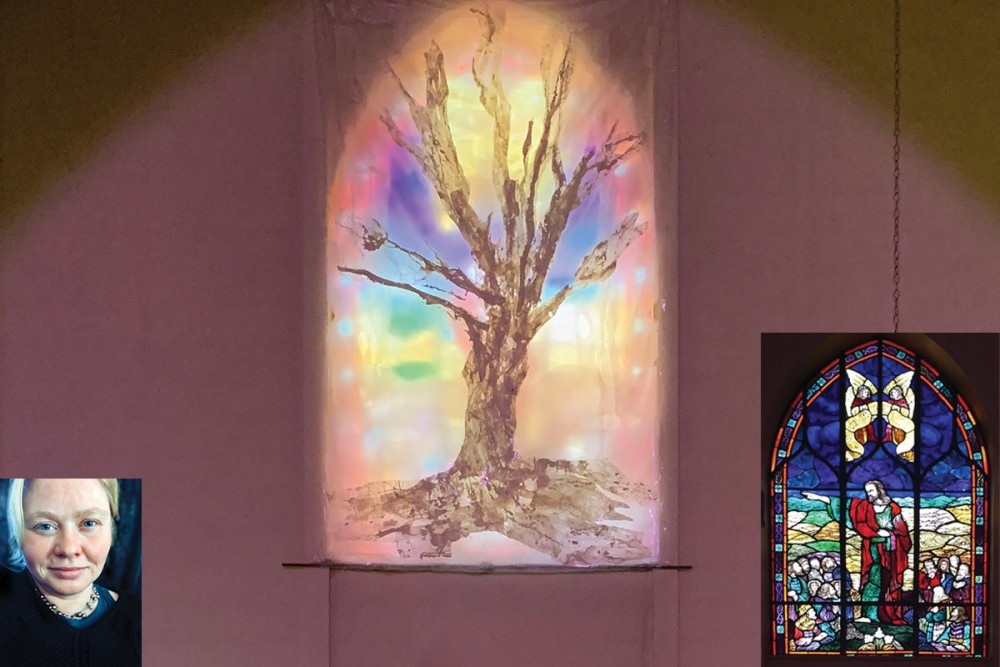This Seattle church’s stained-glass Jesus was far too White
So a local artist found a creative way to cover him up.

Darla DeFrance noticed the White man in the window the first time she walked into the church building. A friend who joined her on a tour of the space called him Manifest Destiny Jesus. He even points west.
The building was going to be the new home of Church of Hope, the Seattle congregation where DeFrance is pastor. But she “didn’t understand or relate to that image of Jesus,” she says. She was trying to build a community representative of the diverse neighborhood, and having one dominant image of God in the church “felt exclusive,” DeFrance says.
At the beginning of each service at Church of Hope, DeFrance asks where people saw God show up in the world that week. They sit in a circle so that everyone can see God reflected in one another. But that dominating image of White Jesus in the stained glass—in a sanctuary where not everyone is White—was “like wearing blinders,” she says. It made it hard to be more curious about who and what God could be.





